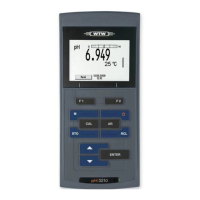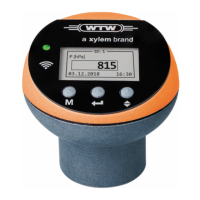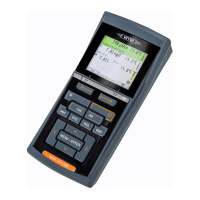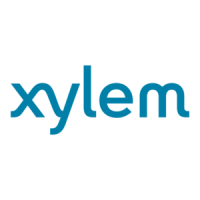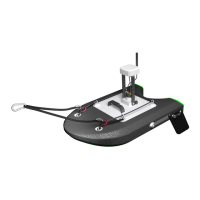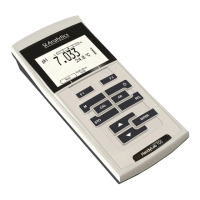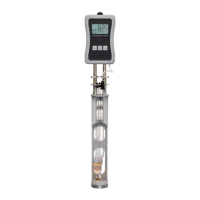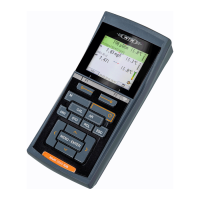pg | 24
e sensor generates data in three formats: RAW, RFU, and an estimate of the pigment concentration in μg/L.
e RAW value is a value unaected by user calibrations and provides a range from 0-100, representing the per
cent of full scale that the sensor detects in a sample.
RFU stands for Relative Fluorescence Units and is used to set sensor output relative to a stable secondary
standard, such as Rhodamine WT dye. is allows users to calibrate sensors identically; for example, calibrating
all sensors in a network to read 100 RFU in a concentration of Rhodamine WT dye. e sensors can then be
deployed and generate data that is relative to all other sensors. Once a sensor is retrieved, it can be checked
against that same standard to assess sensor performance, dri, or the potential eects of biofouling.
e μg/L output generates an estimate of pigment concentration. e relationship between μg/L and sensor’s
RAW signal should be developed through following standard operating procedures of sampling the water body
of interest, collecting sensor data from sample, and then extracting the pigment to establish a correlation. e
higher the temporal and spatial resolution of the sampling, the more accurate this estimate will be.
Chlorophyll
e EXO chlorophyll sensor operates on the in vivo uorescence principle with no disruption of the cells
required to obtain either spot readings or long-term data. e EXO sensor has an excellent detection limit as
determined under laboratory conditions and this advantage should be realized in many eld applications.
EXO chlorophyll readings show excellent linearity on serial dilution of a surrogate solution of Rhodamine WT
(R
2
>0.9999) and this should ensure relative accuracy of eld chlorophyll readings, i.e., a chlorophyll reading
of 100 units will represent twice the algal content of water with a chlorophyll reading of 50 units. Also, EXO
chlorophyll readings show very low interference from turbidity, allowing for more accurate determination of
algal content during rainfall events which release both sediment and algae into the water. e EXO chlorophyll
sensor also exhibits very low interference from dissolved organics, increasing data accuracy.
Blue-green Algae
e EXO BGA readings show excellent linearity on serial dilution of a surrogate solution of Rhodamine WT
(R
2
>0.9999) and this should ensure relative accuracy of eld BGA-PC readings, i.e., a BGA-PC reading of 100
units will represent twice the algal content of water with a BGA-PC reading of 50 units. A signicant advantage
of the EXO BGA-PC sensor is that its readings show less interference from turbidity and this will allow for
much more accurate determination of BGA-PC content during rainfall events which release both sediment
and algae into the water.
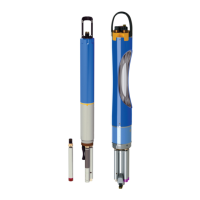
